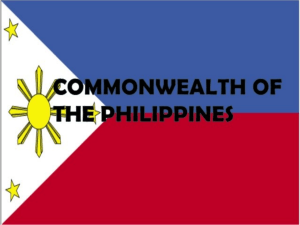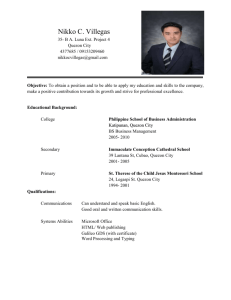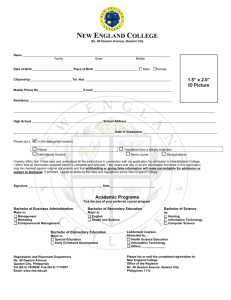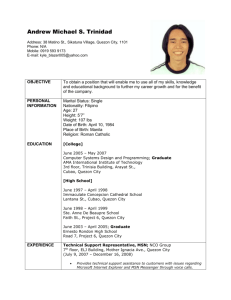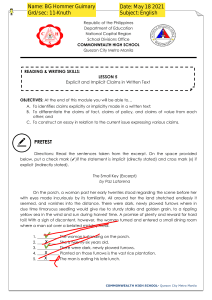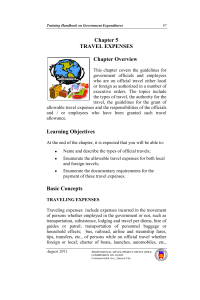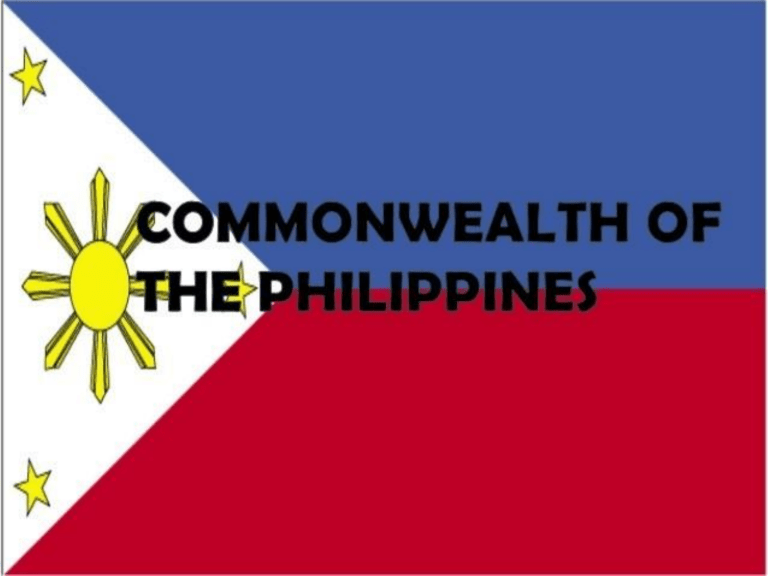
September 15, 1935 national election for the new official of the soon to government of the Commonwealth of the Philippines. 3 main Political Parties N a t i o n a l i s t Party Manuel L. Quezon (president) Sergio Osmena (vice president) N a t i o n a l SocialistParty Gen. Emilio Aguinaldo(P) Meliza (V-P) R e p u b l i c a n Party Bishop Gregorio Aglipay (P) Norberto Nabong(V-P) November 15, 1935 Quezon and Osmena were elected as President and Vice President. Was sworn in as president of the Philippine Commonwealth by Chief Justice Ramon Avancena. Quezon’s Policies “ more government and less policies” • he adopted programs with regard to social justice, education and economic betterment to provide domestic stability. • He shall build a government that will be just, honest, efficient and strong in order to satisfy not only the passing needs of the hour but also the exacting demands of the future. Government Survey Board P r o g r a m ofGovernment T o make changes in all 3 branches of the government. -to extend the civil service -to classify & standardize government positions. -to appoint American advisers on education, taxation, military affairs and others New offices and bureaus were created like: C o u n c i l of National Defense B o a r d of NationalRelief M i n d a n a o and Sulu Commission C i v i l BoardAppeals Social Justice Program C o u r t of Industrial Relations N a t i o n a l Rice and Corn Corporation Agricultural and Industrial Bank and Farmers Cooperative N a t i o n a l Sugar Board N a t i o n a l ReliefAdministration Commonwealth Act No. 20 Commonwealth Act No. 20 • Quezon authorized the institution of expropriation proceedings and/or acquire large landed estates to resell the at nominal cost and under easy terms to tenants. Education F r e e primary education to be givento Filipino children C r e a t e d National Council of Education headed by Dr Rafael Palma Vo c a t i o n a l education was taught in rural high schools. P r i v a t e SchoolLaw C r e a t i o n of Office of Adult Education N a t i o n a l Language Security Concerns • National Defense Act (NDA) = this law established the Philippine Army (PA) --DUTIES— Organizing, training and maintaining internal peace and order and the protection of the country from external attack • December 8, 1941 Japan launched a surprise attack on the Philippines. M a n i l a was declared open city to prevent its destruction and it was occupied by the Japanese on January 2, 1942 S e c o n d PhilippineRepublic --Jose P. Laurel Hukbalahap -- People’s Army Against the Japanese • October 20,1944 --American Douglas McArthur’s army landed on Leyte • August 1945 -- Japan surrendered • April 1946 --Election followed --Manuel Roxas win as a President and Elpidio Quirino as V-President(May 28,1946 – July 4,1946) Prepared by: Jarahdyne B. Gealon
